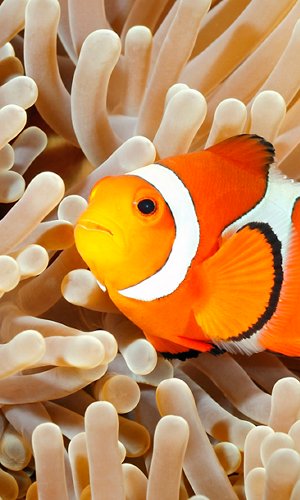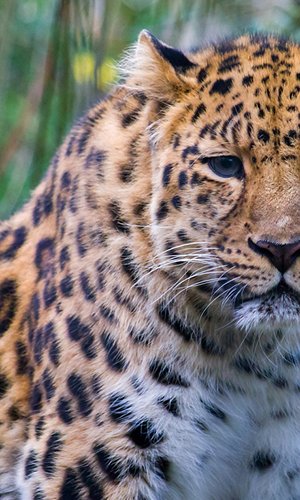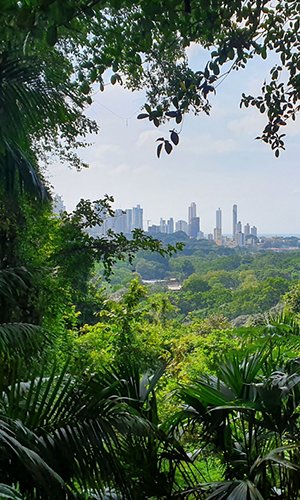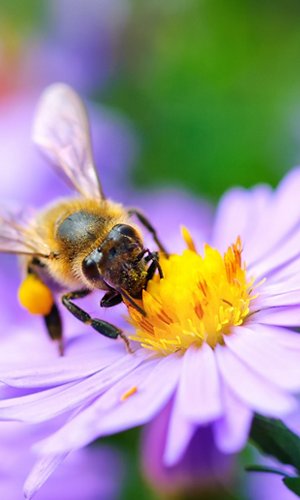Biodiversity is the result of 3 billion 800 million years of evolution, and it is essential for the survival of mankind. In fact, we depend on nature for many fundamental resources, among which food, building materials, heating, textile fibres and the active ingredients of medicinal products. Furthermore, nature provides for other vital functions such as the pollination of plants, purification of the air, water and soil, etc. Today human activities are a severe threat for biodiversity, and they jeopardize the existence of numerous species. The destruction and fragmentation of the habitats, air, water and soil pollution, excessive fishing, the overexploitation of resources, forests and fields, the introduction of alien species and the emission of increasing amounts of gas with the greenhouse effect. That provoke climate changes, are only some of the causes of the loss of biodiversity.
Voice search
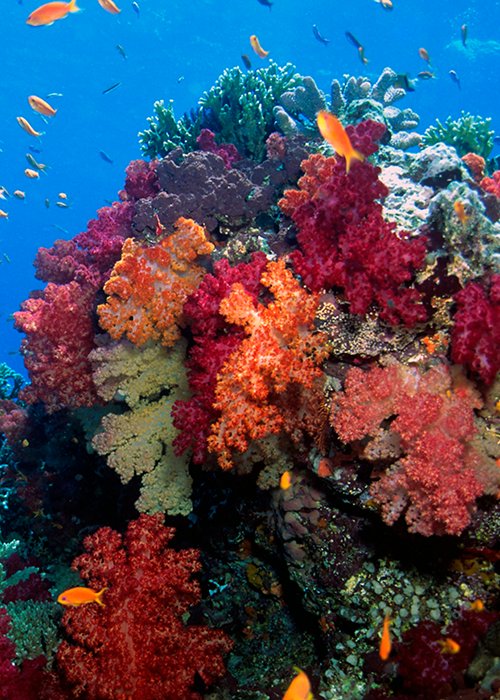
The Earth is populated by an incredible number of different living creatures. The term that is used to define this “crowd” of organisms that populate every corner of the Planet, and that have adapted even to the most extreme environments, is biodiversity or biological diversity. Biodiversity measures the variety of animal and vegetable species in the biosphere and is the result of long evolutive processes. The elements that make up biodiversity can be subdivided into three different levels:
- Genetic level
- Species level
- Ecosystem level
Genetic biodiversity. Genetic diversity refers to the differences in the genetic heritage of a species. The morphological characteristics, i.e. the visible characteristics of living organisms, such as for example the colour of the eyes and fur of a cat, which are examples of variety, from a genes level, in each single species.
Species biodiversity. However when we speak of biodiversity, we generally refer to the species biodiversity, i.e. the diversity of the different species in a determined environment, where by species we mean a group of organisms that can be crossed with one another giving life to prolific offspring. Species biodiversity can be measured through the number of species in a particular area (richness of species), the number of units in each species in a place (abundance of a species) and through the evolutive relationship of the different species (taxonomic diversity). For example, a man and a chimpanzee have 98% of common genes, but as we all well know, their characteristics make them very discernible one from the other. Some areas of the Planet have greater richness of species than others: at the equator, for example there is the largest number of species, that decreases nearer to the Poles. In the ocean there are many more different species near the coastlines than in the abysses.
Ecosystem biodiversity. The variety of environments in a determined natural area is the expression of biodiversity in the ecosystem, in other words, consider the differences there are, for example, between a temperate forest in South America and a mangrove forest at the Equator.
Related topic
Why do we need biodiversity?
Each and every species has a particular function in an ecosystem. Some species can capture energy in various forms: for example, they can produce organic material, contribute to the nutritive system of the ecosystem, control soil erosion, act as a protection from pollution of the atmosphere and regulate the climate. Ecosystems contribute to improving the production of resources, as for example, soil fertility, pollination of plants and decomposition of vegetables and animals. They also carry out real services such as: purifying the air and water, moderating the climate and controlling the rain or drought, and other environmental disasters.
The value of biodiversity
Due to the growth in the human population, in production and consumption, over the last two centuries the natural ecosystems of our planet have been subjected to an impressive depletion of their biodiversity. Human activities have increased the rate of natural extinction and it is estimated that the current climate change will worsen the situation further. Biodiversity is important as a value itself, also because it contributes to human wellbeing: the vegetable components and the fauna in the forests are an important source of food for many local populations, they are a source of active ingredients (25% of the drugs), they contribute to increasing the revenue and freedom of choice of the local populations…
Ecosystem services
Let us now look at the principal services provided by the ecosystems, in detail.
Regulation of the atmosphere: the ecosystems regulate the chemical composition of the atmosphere thanks to gas exchange of oxygen and carbon dioxide. For example, each tree produces an average of 20-30 litres of oxygen a day. A virgin tropical forest produces 28 t. of oxygen per hectare per year, equal to a total of 15.300 million tons per year.
Regulation of the climate: biodiversity also regulates the conditions that determine the climate, such as the temperature, the winds, precipitation, the formation of clouds etc.
Read more...
Ecologists believe that every animal has its own “profession”, which consists in finding the perfect correspondence among the species and its own ecological segment (i.e. the position of each species in an ecosystem). It would be absurd to think of finding an organism that has not “adapted” to its own ecological segment, in fact the penalty for this would be its rapid extinction. By adaptation, we mean any structure, any physiological or behavioural process, that makes an individual, an animal or a vegetable more adapted to survive and reproduce itself than other individuals of the same species. By adaptation we also mean the evolutive process with which a new character is consolidated through natural selection. Adaptation can increase the efficiency in finding or using some fundamental resources such as light, air, food, etc.; or it can allow the organism to support determined conditions such as high or low temperatures, the absence of light or to help its defensive capacity.
Related topic
The shark: a perfect machine
Incredible examples of adaptation can be found, in particular, among the sea organisms, that must live in a context such as water. You surely must have looked underwater with a mask, and surely you must have noticed how difficult it is to see far away. In fact, visibility in the sea depends on a number of factors such as: the temperature of the water, the sea bottom, the plankton organisms and the suspension of various elements. Now imagine you live in this strange ecosystem and you are a large predator that must find food.
Sea mammals: perfect apnoea swimmers
For how long can you hold your breath? If you are good you may even hold it for a minute or two. However, some sea animals can reach an hour or more. This is the case of cetaceans that are mammals, and breathe with their lungs, and therefore must reach the surface in order to breathe exactly like us humans. However particular mechanisms help them to prolong the time of apnoea (i.e. their capacity to hold their breath), especially in species such as the sperm whale, that feed on giant squid, which can be found at great depths.
Everyone at the barber’s shop: cleaning stations
To live in the water does not necessarily mean being clean! Fortunately, there are sea organisms that, during the course of evolution, were transformed into real “cleaners” of other fish. These animals live in a place known as the cleaning station, where other fish stop by in order to be completely cleaned from external parasites and remains of food, as if they were at the barber’s. There is a symbiosis in these areas, because the cleaners and the barbers both draw advantage from this: there is relief for the “clients” which also avoid getting any sickness, and food for the “barber”.
The camouflaging strategy
If a subject moves, the eye can see it helped by various elements that are correlated to the visual capacity of the subject following the action, even a shadow that passes rapidly leaves a sign on the retina, and so it is possible to find its origin. When instead there is no movement, the eye can only see a different shape on a coloured background. The hunting instinct is turned on, in fact, by determined “research images”, i.e. shapes and colours that immediately stimulate the preying instinct, and whatever does not belong to these images, does not arouse much interest.
Distinguishing the cleaner by its clothing
In the cleaning stations which we mentioned here above, often there is also a strange fish that may be confused with the cleaner wrasse. Instead, this fish belongs to the Blenny family: it is of the same size as the cleaner fish, it has the same colouring, it also moves in an identical manner and even imitates the famous cleaner fish’s dance perfectly, but unlike the cleaner fish, it has powerful teeth and in fact it is known as the sabre toothed blenny.
Two heads are better than only one
The body surface of some fish may have varied colour combinations, often they are extremely colourful as in the tropical species that live in the coral reef. The scope of the colouring is to avoid being identified by the prey or by the predators. This aim is reached with camouflaging colours or instruments such as “false eyes” or eyespots that confuse the predators. In particular the eyespots are dark spots that vaguely look like eyes, like those in the butterflyfish, which are there to confuse the predators and are generally to be found in the area of the tail.
The champion of camouflages
In some cases, the animal may even imitate the shape of the inanimate elements that are present in the environment it lives in, and also the colour of the subsoil. The champion of camouflage is surely the polyp, a Cephalopod mollusc (not to be mistaken with the coral polyp). Polyps have very evolved camouflaging systems that are very sophisticated. In fact, it can change the tones and the intensity of its colours thanks to particular star shaped cells called chromatophores. These cells contract and dilate the pigments that are within depending on the stimuli that the animal receives, and in this way they are able to regulate the chromatic intensity of the skin.
Eat me and you will regret doing so!
The characteristic that distinguishes the nudibranchs, small sea slugs without a shell, is surely the variety of colours and patterns of their skin, a variety that has no rivals in the animal world. Up to some years ago, it was believed that those colours could help the nudibranchs to recognize members of their own species, subsequently instead, it was discovered that these molluscs are not even able to distinguish shapes, let alone colours. It is even more complicated to understand what the meaning of those flashy colours could be, considering that a similar covering makes the small and undefended animal stand out even better, and therefore it can increase the possibility of it being intercepted and captured by a predator.
Read more...
The main cause of the loss of biodiversity can be attributed to the influence of human beings on the world’s ecosystem. In fact human beings have deeply altered the environment, and have modified the territory, exploiting the species directly, for example by fishing and hunting, changing the biogeochemical cycles and transferring species from one area to another of the Planet.
The threats to biodiversity can be summarized in the following main points:
- Alteration and loss of the habitats: the transformation of the natural areas determines not only the loss of the vegetable species, but also a decrease in the animal species associated to them. Refer to “Alteration and loss of the habitats”.
- Introduction of exotic species and genetically modified organisms; species originating from a particular area, introduced into new natural environments can lead to different forms of imbalance in the ecological equilibrium. Refer to, “Introduction of exotic species and genetically modified organisms”.
- Pollution: human activity influences the natural environment producing negative, direct or indirect, effects that alter the flow of energy, the chemical and physical constitution of the environment and abundance of the species.
- Climate change: for example, heating of the Earth’s surface affects biodiversity because it endangers all the species that adapted to the cold due to the latitude (the Polar species) or the altitude (mountain species).
Overexploitation of resources: when the activities connected with capturing and harvesting (hunting, fishing, farming) a renewable natural resource in a particular area is excessively intense, the resource itself may become exhausted, as for example, is the case of sardines, herrings, cod, tuna and many other species that man captures without leaving enough time for the organisms to reproduce.
Related topic
Changes in and loss of habitats
One of the greatest threats for the survival of the species are the changes, loss and fragmentation of their habitat. Human beings, in fact, have deeply modified the territory, as a result of a large growth in the population, industrial development, the expansion of transportation networks, and agriculture and fishing on an industrial scale. An example of the consequences of the changes in the habitats can be seen In the Mediterranean Sea. Posidonia oceanica is an endemic marine plant in the Mediterranean that forms submerged sea grass meadows on the sandy bottom, which are a fundamental component of the equilibrium and of the richness of the seacoast environment.
Introduction of exotic species
Often a very important factor is neglected, which is the introduction of allochthonous species, i.e. species whose origin is in other geographic areas and that therefore have not adapted, through the long natural selection processes, to the new environment in which they are introduced. It has been calculated that approximately 20% of the cases of extinction of birds and mammals is due to the direct action of animals introduced by man. The reason for this extinction can be attributed to various causes: to competition for limited resources, to predation by the “new” species, to the diffusion of new diseases and to the damages that the species that have been introduced can cause to the natural vegetation, to the cultivations and to zootechnics.
Extinction is for good
Extinction is an evolutive process that leads to the disappearance of a species or a population. When a species becomes extinct, its entire genetic heritage is lost for good. With evolution, a species can become another in order to adapt to the small environmental changes or due to casual changes in its genetic heritage. This process is known as speciation, in other words the birth of a new species. Speciation and extinction are both part of the natural evolutive process of living beings. Therefore, the natural extinction of a species in itself must not be interpreted as a negative event (nor, obviously, as a positive event), but it must be considered simply for what it is, in other words, an expression of biological evolution.
The extinct marsupial wolf
The thylacine, also known as the Tasmanian wolf or Tasmanian tiger, was the largest known carnivorous marsupial. Thylacines were widespread all over Australia and New Guinea, but these were confined in historical times in Tasmania, where now they have become extinct. The thylacine looked like a dog with stripes but could sit on its hind legs and on its tail like a kangaroo and jump forward 2-3 metres with great agility. At the time of European colonization, the thylacine lived in Tasmania and was widespread specially in the areas near the forests. Probably it hunted at night in the grasslands while during the day it rested, hidden in the forests.
The roots of the problem
In purely ecological terms, what provokes the extinction of a species is the destruction of its habitat and the impossibility to find another one. When the environments change, many of the physical and chemical characteristics change with excessive speed compared to the time for biological adaptation: the organisms that live there die, unless they are able to migrate. The five great biological extinctions of the past were provoked by ecological dynamics that did not depend on human impact (also because the appearance of Homo sapiens was remarkably later) that had these characteristics.
Humans and other species
There are different ways in which humans have become responsible for the disappearance of other species. From this point of view a fundamental responsibility is the impact of agriculture on the world ecology. The conversion to agriculture of the land, that has taken away considerable areas from the forests, the grasslands and the humid environments, has deeply simplified the ancient structure of biomes and ecosystems. Naturally these alterations have had differential results in terms of extinctions in the tropical and subtropical areas where biodiversity reaches its peak, the results of the agricultural conversion of the territory have been much greater than in the higher latitudes.
Human weight on nature
In order to visualize the weight that our species has on the global ecosystem, consider that the entire area of the Earth, is about 51 billion hectares. The surface area above sea level, accounts for little more than 14 billion hectares, which, according to the calculations made by FAO (Food and Agriculture Organization), are in turn subdivided as follows:
- 2 billion hectares of cultivated and built-up areas;
- 3,4 billion hectares of permanent meadows and grasslands;
- 3,8 billion hectares of forests and wooded land;
- 5 billion hectares of frozen land, tundra, deserts and humid environments.
From extinction to conservation
The risk of jeopardizing the biodiversity of the Earth at this stage is quite evident, and it is equally evident that the answer cannot be found only on a scientific scale but must also be discussed on a cultural scale. In fact, if we think of the role of the biological heritage for the survival of human beings, it is possible to see how important the action of biological conservation that now involves the institutions and agencies all over the world is. The most important step made up to date to formally confirm the need to save the natural heritage, is the international treaty known as the Convention on Biodiversity (CBD).
Let’s save biodiversity
With small daily actions also we can do something important to preserve biodiversity.
Here is some advice:
- Don’t buy animals and rare plants or objects produced with tortoise shells, ivory, exotic feathers, shark teeth, fur.
- Coral and shells: often their indiscriminate catching threatens the entire ecosystem where they live.
- Avoid killing organisms with no reason: sport fishing isn’t better than hunting!
- Don’t deteriorate the environment: a wood full of rubbish kills many more human beings than you can imagine…
Biodiversity day
Decide the place where you can spend your observation day: often it’s not necessary to cover hundreds of kilometres to find an environment full of life, sometimes, we can unexpectedly make beautiful observations close to home or even in the garden of our own house.
Dress suitably to the place where you are and comfortably: shoes are very important to walk well, but also pay attention to the colour of your clothes. Many mammals, in fact, can’t see red and purple but birds can. A bright-coloured shirt is the best way to avoid seeing animals!

